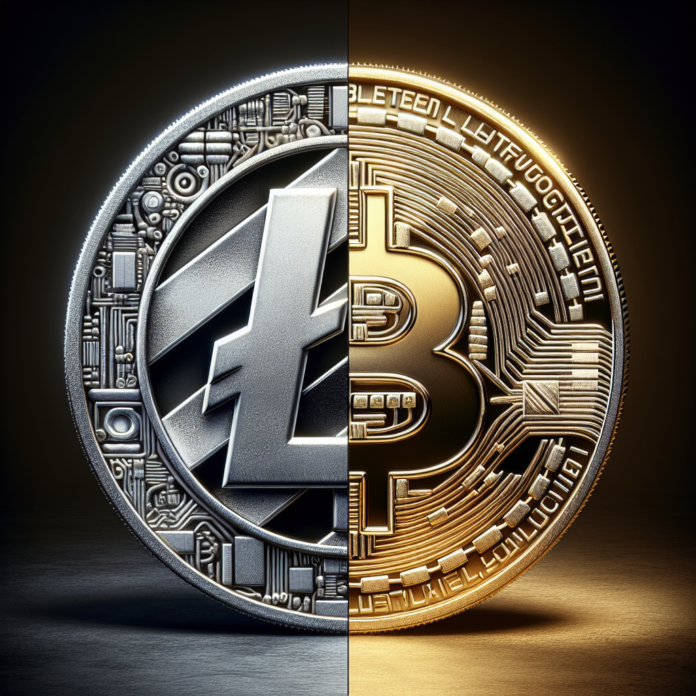In the dynamic realm of cryptocurrencies, Bitcoin (BTC) and Litecoin (LTC) are often mentioned in the same breath. Created by Charlie Lee in 2011, Litecoin was envisioned as the “silver” to Bitcoin’s “gold,” but what does this metaphor actually mean in practice? Unraveling the key differences between these two pioneering cryptocurrencies is essential for any investor or enthusiast looking to understand the digital currency landscape.
Origin and Philosophy
Bitcoin, the original cryptocurrency, was introduced in a 2008 whitepaper by the mysterious Satoshi Nakamoto. It was designed as a peer-to-peer electronic cash system to circumvent traditional financial institutions. Litecoin, while inspired by Bitcoin, was birthed with the intent to improve upon Bitcoin’s limitations, offering faster transaction times and lower fees.
Technical Specifications: Blockchain and Consensus
Both Bitcoin and Litecoin are powered by proof-of-work (PoW) consensus algorithms, but they employ different cryptographic algorithms. Bitcoin uses the SHA-256 algorithm, which is more complex and requires significant processing power. Litecoin, on the other hand, utilizes the Scrypt algorithm, designed to be less resource-intensive and more accessible to individual miners. This difference directly influences mining practices and network security for both cryptocurrencies.
For a detailed perspective on Bitcoin’s algorithm and mining practices, consider reading materials from Bitcoin.org. To understand Litecoin’s approach, you can explore resources provided by Litecoin Foundation.
Transaction Speeds and Costs
One of the most notable differences lies in transaction times. Litecoin boasts a faster block generation time, approximately 2.5 minutes per block, compared to Bitcoin’s 10 minutes. Consequently, Litecoin can confirm transactions quicker than Bitcoin. Transaction cost is another critical factor, with Litecoin typically offering lower fees compared to Bitcoin. These factors make Litecoin appealing for daily transactions and micro-transactions.
Market Capitalization and Popularity
Bitcoin is the undisputed leader when it comes to market capitalization and popularity. It’s the most recognized and widely utilized cryptocurrency globally. Litecoin has a smaller market cap and, while popular, doesn’t match Bitcoin’s level of mainstream recognition. To track the current market cap and standing of both, financial platforms like CoinMarketCap provide up-to-date statistical data.
Total Supply
The supply limit is another area of divergence. Bitcoin’s maximum supply is capped at 21 million coins, whereas Litecoin will have a maximum circulation of 84 million coins. The quadruple supply limit of Litecoin was a deliberate choice to make the cryptocurrency more accessible and prevent too quick a saturation of coins.
Adoption and Integration
As the first cryptocurrency, Bitcoin has the advantage in adoption and integration into existing financial systems. Numerous businesses accept Bitcoin as a form of payment, and it’s often favored by investors as a store of value or “digital gold”. Litecoin’s acceptance is growing but still lags behind Bitcoin. However, its technical advantages often lead to it being used as a testing ground for new technological implementations that might eventually transition to Bitcoin.
Security and Development
Both Bitcoin and Litecoin networks are highly secure, but the sheer size and computing power backing Bitcoin result in a more robust defense against attacks. Nevertheless, Litecoin’s dedicated development team continues to work on improvements, especially in terms of scaling and privacy, with initiatives such as the MimbleWimble upgrade.
Conclusion
Bitcoin and Litecoin serve as two stalwarts of the cryptocurrency world, each with unique characteristics. Understanding their differences in philosophy, technology, speed, cost, supply, and market integration empowers you to make more informed decisions about using, trading, or investing in these digital assets. While Bitcoin remains the leader in many respects, Litecoin’s innovations and efficiencies make it an important and dynamic complement to Bitcoin in the broader crypto ecosystem. Whether considering an investment or simply exploring the possibilities of digital currencies, keeping an eye on both of these cryptocurrencies and their trajectories is advisable for any crypto aficionado. To remain abreast of the latest news and trends, Cointelegraph is a reliable source for daily cryptocurrency updates.




 AGF-B.CO
AGF-B.CO